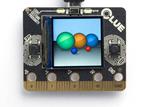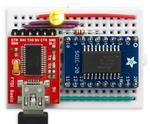Other

“This is a simple ray tracer written in uLisp, running on a colour TFT display. The scene contains five spheres and a plane.”

“This is a version of uLisp 3.0 designed to work with the tiny Arturo182 Serpente boards. It’s a slightly modified of the ARM version of uLisp; at some stage I may incorporate it into the standard ARM version …

“This project describes how to run programs in the high-level language Lisp on a Microchip ATtiny 3216 microcontroller costing just over a dollar. It uses my Lisp interpreter for microcontrollers, uLisp.”

“This is a self-contained computer with its own display and keyboard, based on an ATmega1284, that you can program in the high-level language Lisp: You can use it to run programs that interface to components such as LEDs and push-buttons …

“My aim in designing the first Tiny Lisp Computer was to create the smallest practical self-contained computer, with its own display and keyboard, that you could use to program in Lisp. This second version extends the original Tiny Lisp Computer …

“This article describes a self-contained computer with its own display and keyboard, based on an ATmega328, that you can program in Lisp. You can use it to run programs that interface to components such as LEDs and push-buttons via the …

